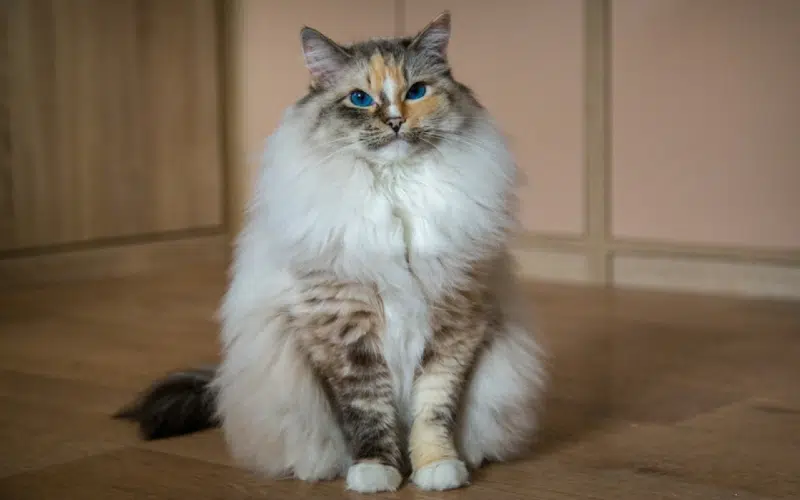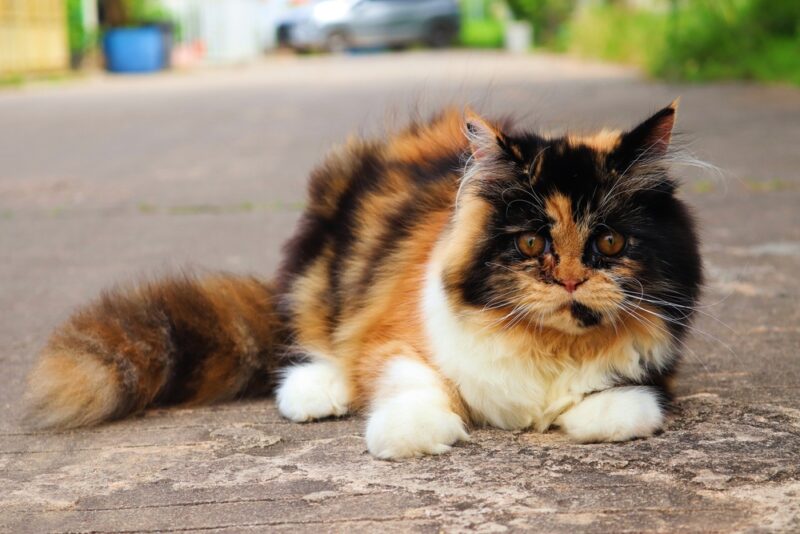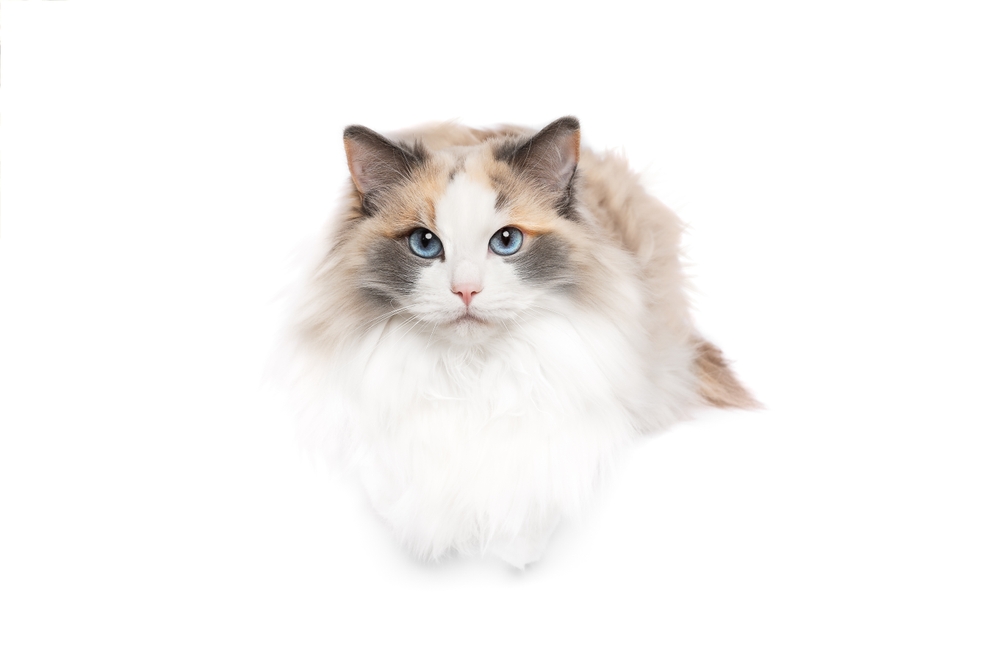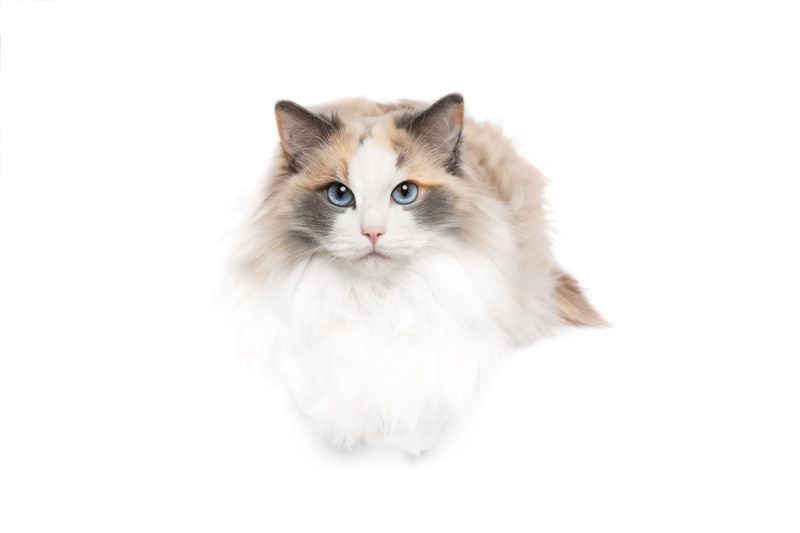Ragdoll cats are an incredibly diverse bunch with 20 standard coat colors and four possible patterns. One thing that confuses some Ragdoll lovers is whether or not these cats can have a calico coat type. To clear up any confusion, calico is not mentioned in the Cat Fanciers’ Association Ragdoll breed standard, so purebred Ragdolls cannot be calico, though mixed breeds may be.
However, Ragdoll cats can have tortie (tortoiseshell) points as per the CFA breed standard, and this is where the confusion likely stems from. Ragdolls with tortie point coloring are often mistaken for being calico, but that isn’t the case. Let’s explore what tortoiseshell Ragdolls look like and the difference between calico and tortie coat coloring.
About Tortoiseshell Ragdolls
Tortie coloring is listed as a possible standard color for Ragdolls, but not on its own. The Ragdoll tortie coloring is possible in four combinations: the seal-tortie point, chocolate-tortie point, seal tortie-lynx point, and chocolate-tortie lynx point.
Tortie Points
The seal-tortie point has a fawn or cream-colored body that is lighter around the stomach and chest. Their points are seal-colored (a very dark brown) mottled with a reddish or cream color.
Chocolate-tortie point Ragdolls have ivory-colored bodies and lighter brown (chocolate) points with red or cream mottling like the seal-tortie point. The difference between tortie Ragdolls and standard seal and chocolate-point Ragdolls is the presence of this mottled effect on the points.
Tortie Lynx Points
The difference between tortie point Ragdolls and tortie lynx points is that, in addition to tortie mottling on the points, the tortie lynx point also has seal or chocolate-colored bars with a lighter color (background) between them. Tortie lynx points have lighter centers on their ears and may be shaded with ticking, ghost striping, or cream mottling.

What’s the Difference Between Calico and Tortie?
Though purebred Ragdoll cats cannot officially be calico as per the breed standard, if they’re crossed with another breed, they might end up with calico coloring. Persians, for example, can be calico and are sometimes crossed with Ragdolls.
Are Calico and Tortie Breeds?
No, calico and tortie are simply coat color varieties. Persians, American Shorthairs, British Shorthairs, and Maine Coons are but a handful of breeds that can be calico and tortie.

What Are Calicos and Torties Like?
Even though torties and calicos aren’t breeds, some personality traits have been attributed to cats with this color pattern, particularly sassiness, feistiness, and independence. Apparently, it’s not just all in our heads either!
A survey of cat owners conducted by the University of California to find out if there is a link between coat color and aggression in cats revealed that torties, calicos, and “torbies” are reported to be “more frequently aggressive” toward humans in various situations.
Don’t let this put you off; torties, calicos, and torbies are also known for being incredibly loving, loyal, and entertaining—just don’t be surprised if they throw a healthy dose of sass in your direction from time to time!
Conclusion
To recap, Ragdoll cats can’t officially be calico as per the breed standard—the type of coloring on Ragdoll points is tortie, not calico. However, calico and tortie cats are often mistaken for one another. Although a purebred calico Ragdoll isn’t possible, you may find a calico Ragdoll mix because several breeds display calico coats.
Featured Image Credit: Stefanie Margareta, Shutterstock












